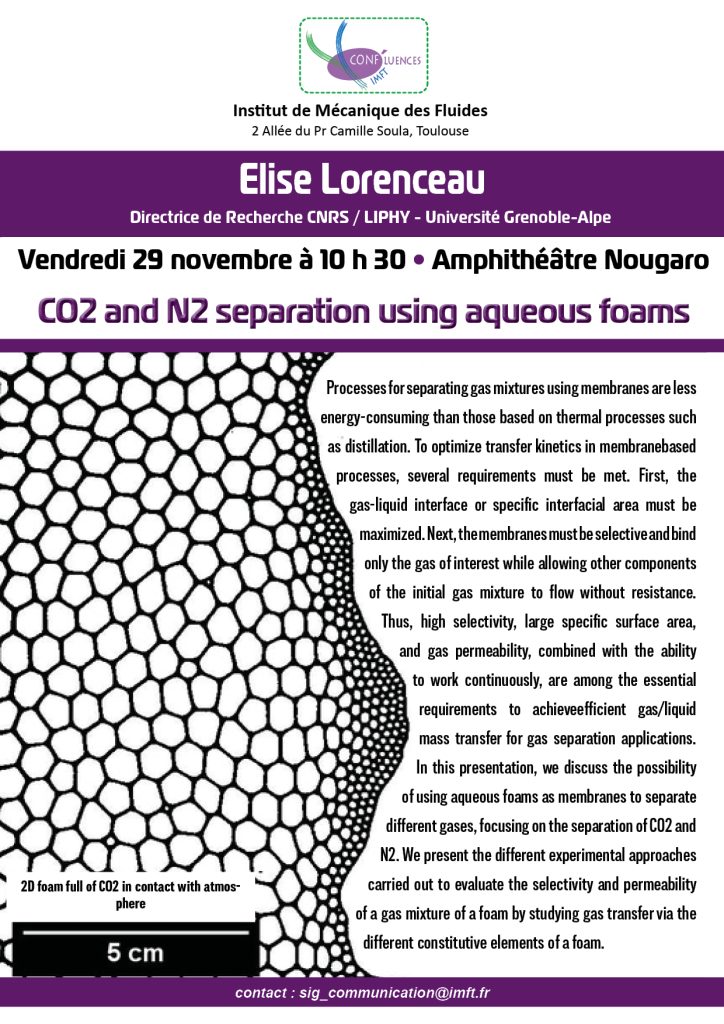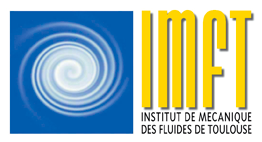CO2 and N2 separation using aqueous foams

Conf’luence Elise Lorenceau
Directrice de Recherche CNRS / LIPHY – Université Grenoble-Alpe
Vendredi 29 novembre à 10 h 30 • Amphithéâtre Nougaro
Processes for separating gas mixtures using membranes are less energy-consuming than those based on thermal processes such as distillation. To optimize transfer kinetics in membrane- based processes, several requirements must be met. First, the gas-liquid interface or specific interfacial area must be maximized. Next, the membranes must be selective and bind only the gas of interest while allowing other components of the initial gas mixture to flow without resistance. Thus, high selectivity, large specific surface area, and gas permeability, combined with the ability to work continuously, are among the essential requirements to achieve efficient gas/liquid mass transfer for gas separation applications. In this presentation, we discuss the possibility of using aqueous foams as membranes to separate different gases, focusing on the separation of CO2 and N2. We present the different experimental approaches carried out to evaluate the selectivity and permeability of a gas mixture of a foam by studying gas transfer via the different constitutive elements of a foam.
